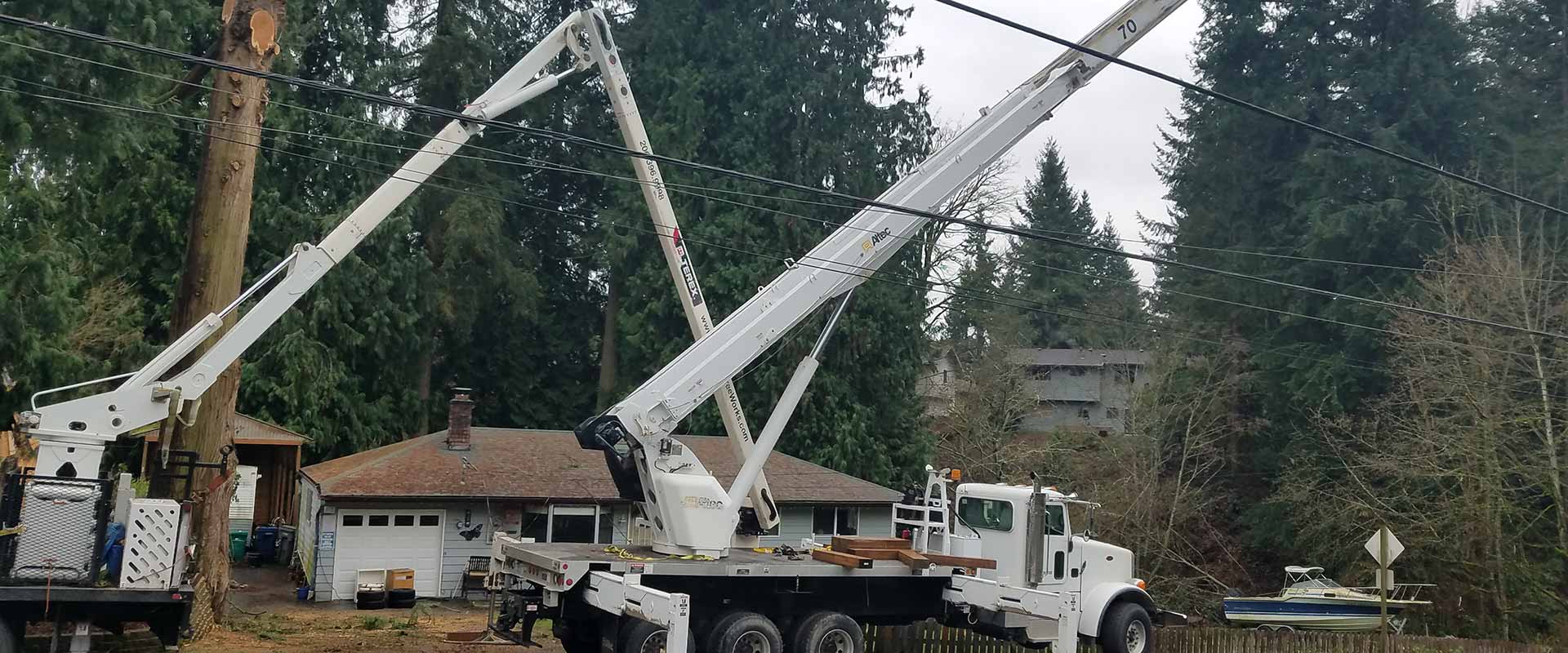Before tree planting around utilities, please review this vital information to help avoid conflicts on your Seattle, Eastside or North Bend property. After all, don’t you want to enjoy your tree for years to come without problems?
Plan before tree planting
Most people don’t give utilities much thought unless something goes wrong and service is disrupted. When deciding where to plant a tree in your yard, your utility lines should be a priority if you want to avoid future problems.
In addition to overhead lines, out of sight underground lines also need consideration. Plus, think about how tall that tree will be in 5, 10, 20 years. Keep in mind that a tree’s root structure often spreads out even wider than the canopy.
Overhead lines
It’s easy to overlook overhead lines when planting a sapling that’s no where near tall enough to cause problems. . . yet. You do need to think about the height and spread of the tree as it grows.
As the canopy grows it could eventually touch the lines, which may cause service interruptions. When this happens, utility providers prune the branches to allow a safe clearance from the wires.
In this instance, pruning is done for safety and aesthetics is not the priority. As a result, the tree could have an unnatural appearance. Periodic pruning can lead to a shortened life span as trees near power lines are under increased stress and more susceptible to insect and disease.
Potential safety hazard
Children and adults climbing in trees (near power lines) can be injured or even killed if they come in contact with the wires.
It’s best to put some thought into the selection and placement of a new tree so you can eliminate potential public safety hazards and reduce chances of utility interruptions caused by tree branches.
Underground lines
Out of sight, out of mind. This is exactly why underground lines are often forgotten. The same goes for a tree’s root system, which can span a larger area than the canopy. Luckily, tree roots and underground lines often coexist without problems.
If any of the underground lines need to be dug up for repair, the tree’s roots could be damaged. The biggest danger to underground lines is during the planting. It’s a good idea to make sure you know the location of your underground utilities as they may not be buried as deep as you think.
It’s always a good idea to call your utility company before tree planting around utilities. In fact, locating underground lines before digging may be a law so check local requirements as you don’t want to get into trouble.
Proper placement around homes
As you consider where to plant trees, we have some handy tips for proper placement to minimize potential future problems. You’ll be thankful that you followed this advice.
Tall zones
Trees that grown 60 feet or taller are considered tall and should be planted at least 35 feet away from your house. This gives it enough space to allow for root development and minimizes any damage to your home.
If planting by the street, the site should be great than 8 feet and allow for a large root system, trunk diameter and trunk flare. Large trees are mostly recommended for parks, meadows or open areas with no overhead lines nearby and where there are no restrictions.
Medium zones
Medium-sized trees are those than grow up to 40 feet. They are often used to frame or soften the appearance of a structure. Appropriate places for medium trees are areas (or medians) 4 to 8 feet wide, including planting squares 8 feet or larger.
Low zones
Trees with a mature height of less than 20 feet are ideal for low zones, which extends 15 feet on either side of overhead wires. This includes street tree plantings under utility lines.
Tree planting tips
Evergreen trees work great as windbreaks and should be planted about 50 feet or more from your house. Plant deciduous trees where they can shade your house in the summer. After they drop their leaves in the fall, the bare canopies allow warm sunlight to reach the house during winter.
Right tree in the right place
Take time before tree planting around utilities to select the right spot. You’ll be rewarded in the future when you don’t have to deal with issues that could have been prevented.
Contact Eastside Tree Works for any tree-related services you may need for your Seattle, Eastside or North Bend property.

